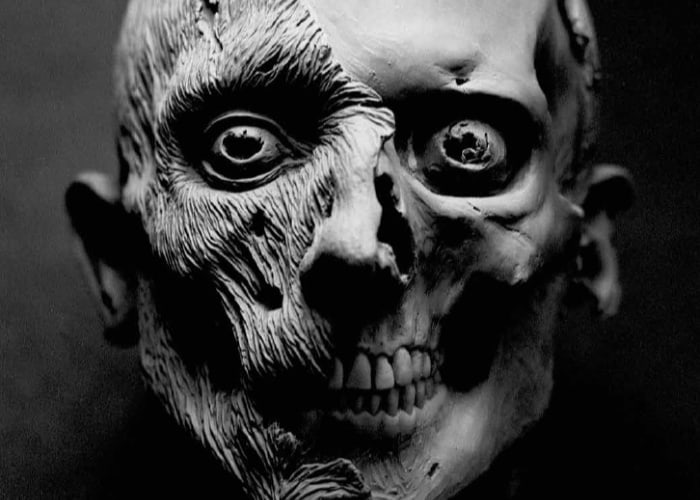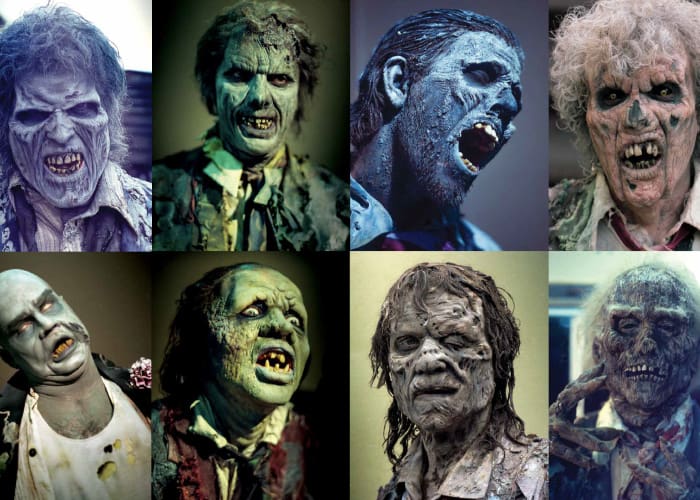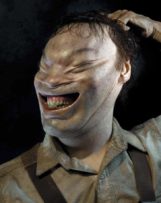
Hey, you! Yeah, you. The Rick Baker obsessive. The one who has spent a lifetime gobbling up every magazine clipping, Blu-ray special feature, and YouTube video featuring the slightest reference to the makeup master’s achievements. You’ve read it all. You know it all. Yet, you want more and happily scooped up the latest Arrow Video Blu-ray of An American Werewolf of London for that original uncompressed 1.0 mono track. Yeah. I’m going to need you to start scouring the cracks of your couch and rolling those unearthed pennies because the new two-volume tome known as Rick Baker: Metamorphosis Vol 1: 1950 – 1989, Vol 2: 1990 – 2019 from Cameron Books is a gamechanger. It’s a celebration featuring never-before-seen behind-the-scenes photographs, as well as dozens of stories that elevate your favorite films beyond their already legendary status.
J.W. Rinzler has authored many wonderful and exhaustive dips into significant cinematic works, and they often offer insight into their subjects, but he has never had such an enormous canvas to venerate. Rick Baker: Metamorphosis is a brick, and besides setting you back $250, the book is as much a deadly weapon as it is an instrument for education. Rallying a fandom to shell out serious cash may sound crass, especially when you could buy a whole shelf of Blus for that value, but dammit, this beast demands attention. Its bite on your wallet hurts so good. You will not mind the resulting diet of affordable ramen. A couple of months of cheapass noodles will get your budget back on track.
Stretching across two thick spines containing 736 pages, Rinzler refuses to let a single entry in Baker’s filmography slip his mind. As you might expect, movies like An American Werewolf in London and Ed Wood receive lush and lavish treatment, while less renowned fare like The Devil’s Advocate and the Psycho remake are stuffed together in one chapter. Yet, the so-called minor efforts experience a warm embrace from the author and unfurl trade secrets. Even Baker forgot that he had helped Gus Van Sant on the redux Mrs. Bates corpse, but here she is in all her shriveled glory. Her portrait is almost enough to spur a re-examination of the film itself. She’s grotesquely beautiful.
Naturally, the reader will gravitate to the portions of the book that already hold sway on their psyche, and it’s easy enough to hop around the content, but I often found myself more infatuated with the hidden gems. As the man who redefined the werewolf transformation with John Landis in 1981, what was it like to revisit that particular subgenre for Wolf in 1994 and The Wolfman in 2010? Baker was not originally meant to work on the Jack Nicholson flick, but when other artists attempted to drown the actor in makeup appliances, he was called in for an emergency fix. Baker wanted less, not more, implying the lupine effect as an enhancement of Nicholson’s inherent beast-like nature. For The Wolfman, the production was a nightmare of indecision, sucking his soul dry as his creature work was reduced to nil under the cheaper brush of CGI. Baker nearly lost himself to anxiety on that shoot, and it’s clear that The Wolfman marked the beginning of an end.
There is a pain to reading Rick Baker: Metamorphosis in chronological order. When you finally hit Chapter 36, which focuses on Tim Burton’s Planet of the Apes, you see an art form at its peak. Here are the heights of a physical performance transformation. I love everything Matt Reeves and Andy Serkis did on their Apes trilogy, and the motion-capture technology displayed there is astonishing. Its narrative is far superior to Burton’s awkward script, but Baker’s primates are legit. You don’t see Tim Roth or Michael Clarke Duncan under the makeup, you see Thade and Attar; they capture the light and have the weight of a genuine being. Constructing 500 apes for one shoot costs a whole lot of money, and 20th Century Fox nearly nixed Baker’s deal in pre-production. So, just as Baker achieved perfection in his field, the field got demolished. Art will lose to budget every time.

From Planet of the Apes, you jump to a number of compromises, where Baker’s work runs in conjunction with low-cost digital techniques. Men in Black II offered a chance for Baker and his team to run wild with extraterrestrial designs; Cursed gave him another stab at a lycanthrope, and Hellboy gifted him the excuse to infuse Boris Karloff atop Ron Perlman’s distinct visage. In each case, Baker’s work shines while the CGI struggles. He is at the top of his game, while computer innovations were still working out the kinks.
The ultimate beauty of Rick Baker: Metamorphosis is how it highlights the genius at play even in the films casually dismissed minutes after their opening weekend release. We all love to dump on Joel Schumacher’s handling of Gotham City in Batman Forever and Batman and Robin, but removed from the confines of the dubious final product, Baker’s Mr. Freeze popsicle people are gobsmackingly sublime. An extreme close-up on Tommy Lee Jones’ Two-Face terror exposes a gorgeous gloss of purplish, lunar surfaced skin. Bruce Wayne’s phantasmic bat may have only haunted the screen for a few brief seconds, but within Metamorphosis, the gargoyle puppet is granted several panels to strut his stuff. A deep reading of the skill and stories behind such imagery fosters respect for films once regarded as disasters.
As Rinzler winds down the saga of Rick Baker, we meet an artist free from the toils of the industry. He retired in 2015 because the list of creature designs in his head kept growing, and movies simply were not allowing him to bring them to fruition. In these last handful of pages, you will discover an unbridled Rick Baker practically rupturing creativity. Now he has the time to offer his spin on Famous Monsters of Filmland covers, firing off portraits of Conrad Veidt from The Man Who Laughs and Charles Laughton’s Quasimodo. Baker did his time in the dungeons of Hollywood, which birthed the nightmares and dreamscapes of countless audience members, but his gigs today belong to his heart.
Related Topics: John Landis, Rick Baker




